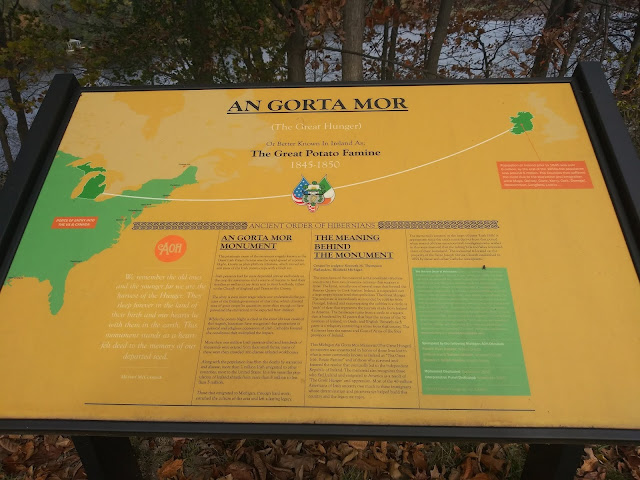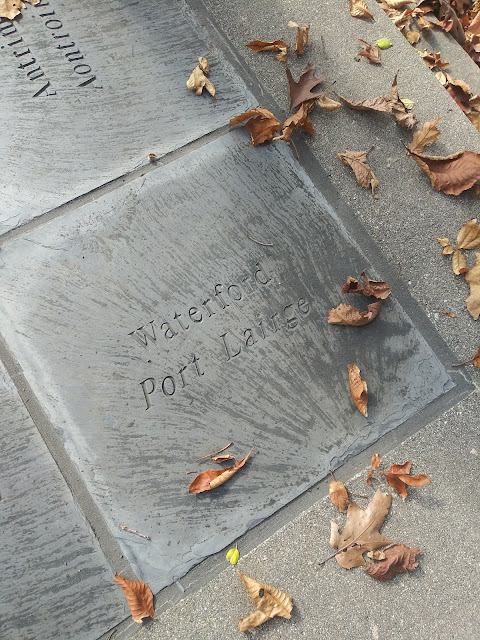 |
| Pictures on this post were from J. Moyer October 28, 2020 |
The An Gorta Mor is Irish for The Great Hunger or otherwise known as the Irish Potato Famine. This memorial is located in Brooklyn, Michigan, In Lenawee County, on US 12 in the Irish Hills district. It overlooks Iron Lake and shares its home with the St. Joseph Shrine Church. This area is knows as Irish Hills due to the number of Irish who settled in this area of Michigan. The rolling hills and lakes reminded them of Ireland and they decided to call this area home.
An Gorta Mor was dedicated on September 19, 2004 by the Ancient Order of Hibernians (AOH) of Lenawee County. AOH is the oldest and largest Irish Catholic Organization in the United States dedicated to preserving Irish heritage, and in honor of the Great Hunger, work towards fighting hunger across America.
Sculpted by Kenneth M. Thompson, who has been making sculptures for over three decades now, has a studio in Blissfield, Michigan. As of 2019 he has completed more than 50 large scale sculptures across the country, such as Reclamation Archway for Blue Cross/Blue Shield of Michigan in Detroit, Peach Arch for the city of Toledo in honor of those who fought in the Vietnam, and Ferris Arch outside of the Rankin Student Center on the campus of Ferris State University in Big Rapids, Michigan.
The Lintel, or the horizontal block that spans across the two vertical supports, is the step that formed the Penrose Quarry in Cork Harbor, which is the southern shore of Ireland. For many, this was the last piece of Ireland they touched before making their way to the ships that sailed to America. This is the same harbor that the famous ship Titanic stopped at before its journey across the Atlantic Ocean.
The empty bronze bowl on the bottom represents the famine that took place across Ireland between 1845 and 1852. Surrounding the sculpture is a small wall of cobble stones from Donegal, Ireland to represent the the migration from Ireland to the United States.
The platform that the sculpture rests upon are 32 paver stones. The four corners is the names of the four provinces of Ireland and the Coat of Arms. The 32 paver stones represents the 32 counties of Ireland. Beneath each paver is a stone from that county.
What is the Great Potato Famine?
In the 1840's, about a third of Ireland's population was dependent upon the potato crop. Phytophthora infestans, also known as potato blight, ruined the potato crop. It shrinks the size of the potato and rots out the inside of the potato making it inedible. For seven years this lasted in Ireland. Over 1 million people starved to death, and over 2 million left their home as they migrated elsewhere around the world, shrinking Ireland's population by 20% to 25%.















No comments:
Post a Comment